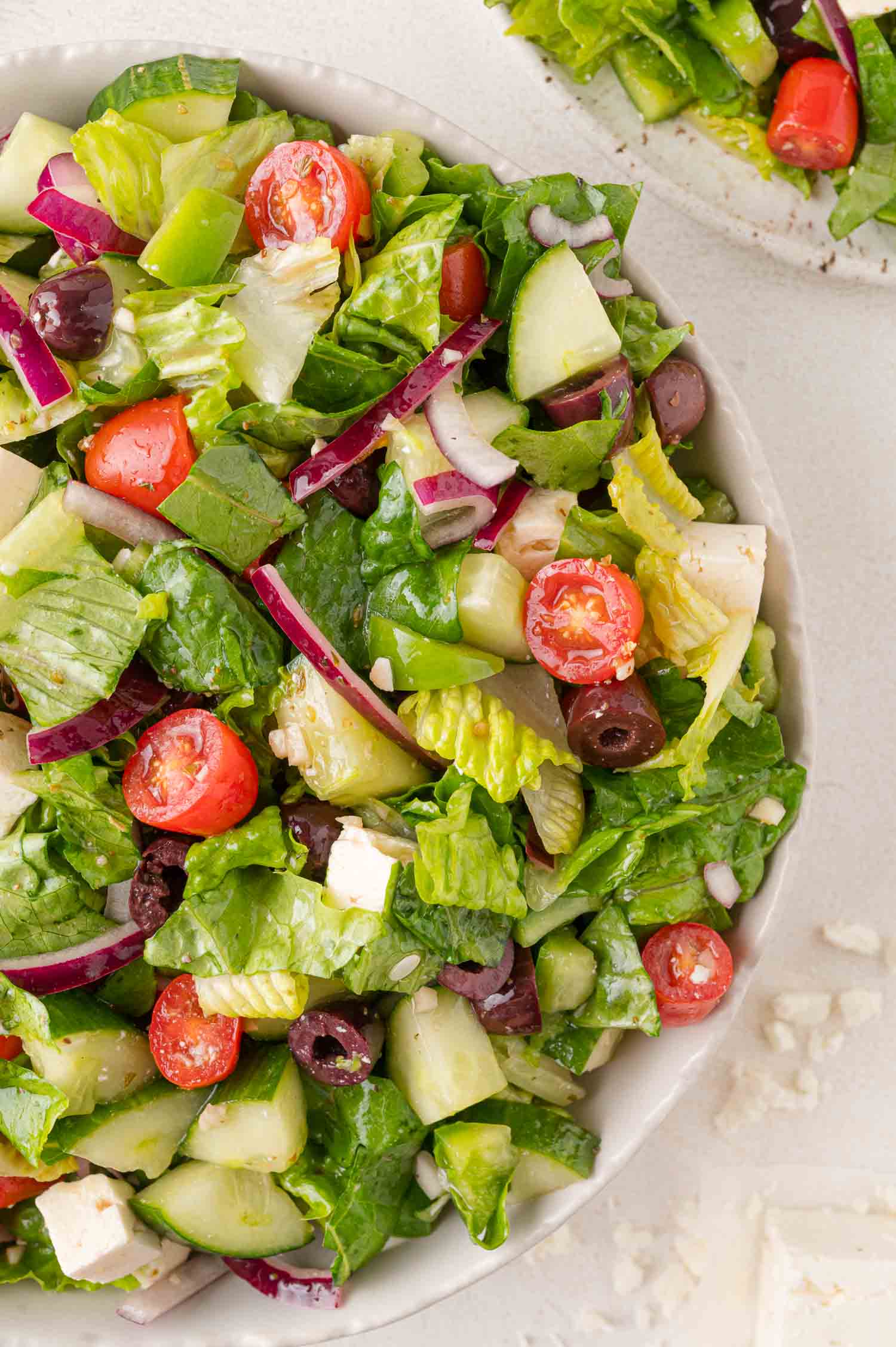Greek Salad Recipe
Recipe Overview
Why you’ll love it: This Greek salad recipe is tossed to evenly distribute the flavors, and since everything’s cut into bite-sized pieces, it’s easier to eat than the classic version! It still has all the ingredients and flavor you love, from the briny olives and cheese to the bright zippy dressing.
How long it takes: 20 minutes
Equipment you’ll need: large bowl and small bowl or liquid measuring cup
Servings: 8
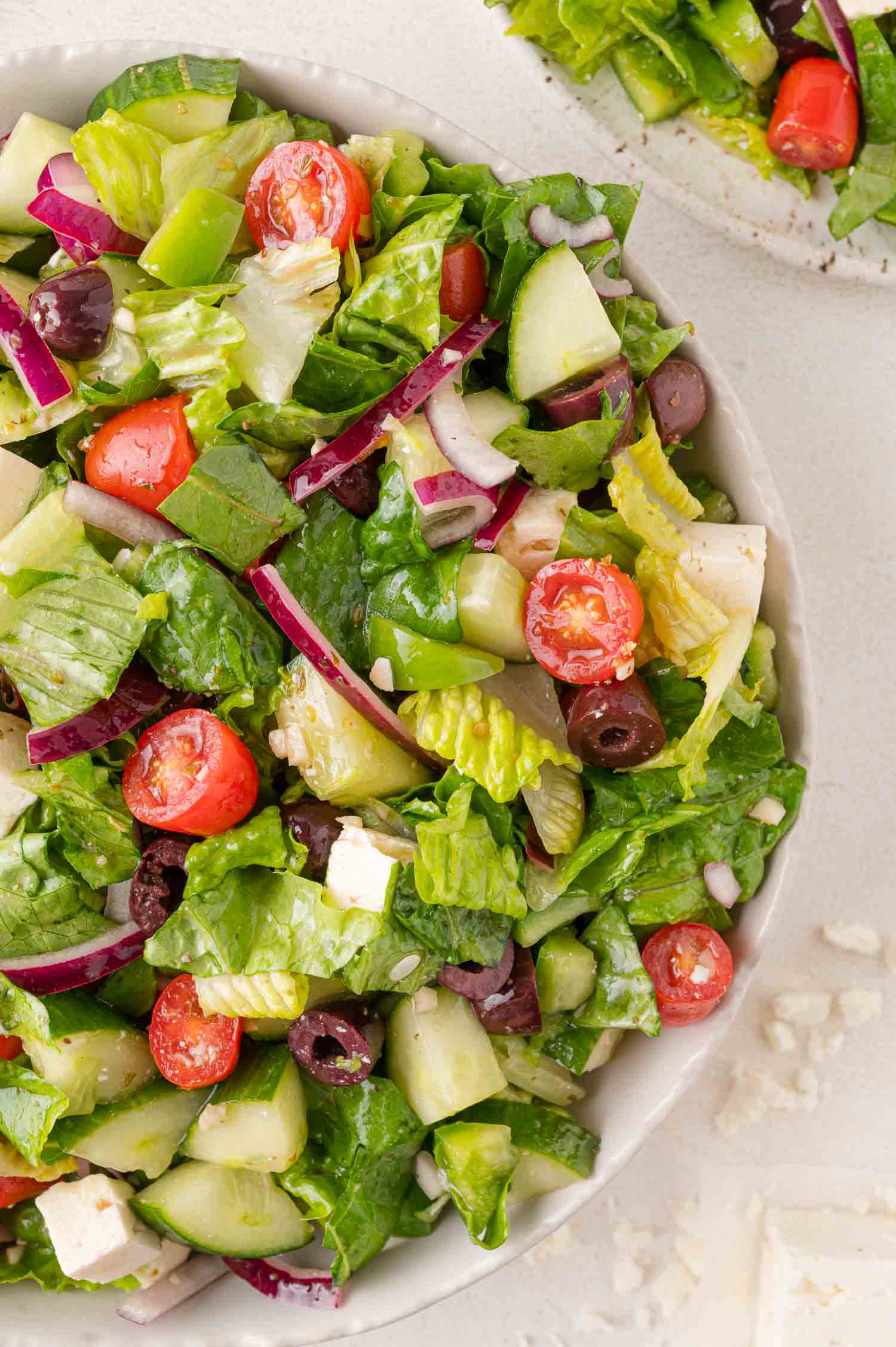
Pin this now to find it later
Not-So-Traditional Greek Salad
A classic Greek salad usually has a big slab of feta accompanied by large chunks of green pepper and tomato, along with olives, onion, and cucumber. Without a doubt, it’s delicious but it’s a little bit unwieldy to eat. Plus, the lack of lettuce feels like an oversight. This is a salad that needs some lettuce!
So I’ve decided to put my own spin on Greek salad with this recipe. It still has the feta, Kalamata olives, and traditional veggies, but they’re cut into fork-sized pieces to make your eating experience seamless (a technique I borrowed from my chopped Greek salad). I also add lettuce, which is perfect for making the most of that zippy red wine vinaigrette.
My Greek Salad Recipe
A modernized Greek salad recipe. Adding lettuce and cutting all the veggies smaller gives Greek salad an updated feel without changing any of the core ingredients and flavors we love!
Big, bold flavors. What makes Greek salad so delicious is all the BIG flavors. Other than the lettuce and the cucumbers, there are really no shrinking violets here! The Kalamata olives and cheese are salty and briny, red onions are pungent, the tomatoes are sweet and acidic, green bell pepper adds sharpness, while the tangy dressing ties it all together.
Fantastic textures. The other draw of a Greek salad is the texture. It doubles down on the crispy and crunchy but the cheese adds creaminess, and tomatoes give it bursts of juiciness.
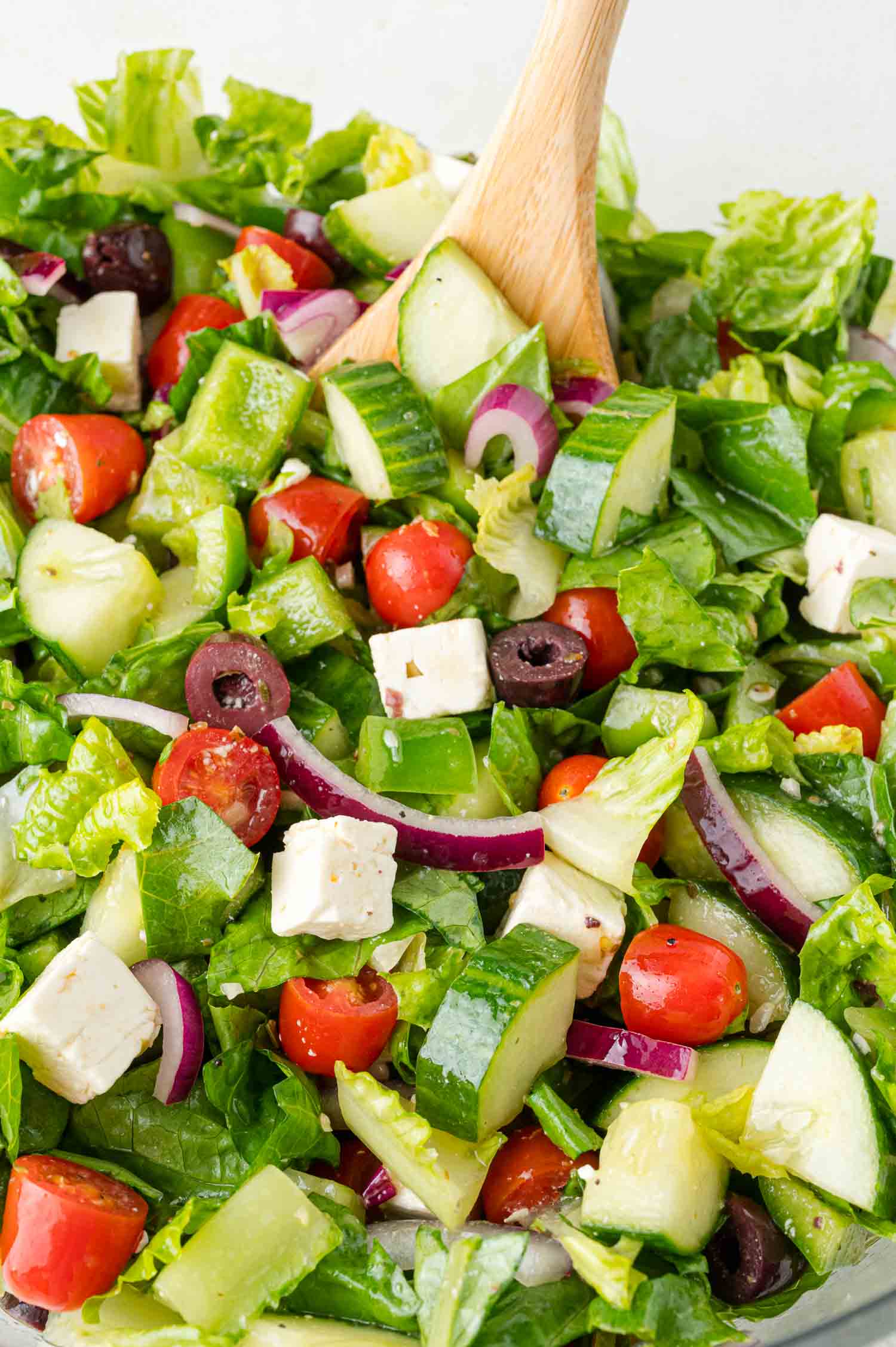
Ingredient Notes
- Romaine lettuce: I use a whole head of romaine lettuce; if you use hearts of romaine, you’ll need to buy three. Romaine is crisp and sturdy enough to stand up to the other ingredients in this salad.
- Red onion: I like to slice the onions very thinly so they aren’t overpowering. A mandoline slicer helps!
- Tomatoes: You can use cherry or grape tomatoes. I prefer the petite tomatoes to a full-size tomato because they release less juice into the salad.
- Cucumber: I recommend a greenhouse cucumber. It has fewer seeds and the edible peel is very colorful. Persian or English cucumbers will also work.
- Green bell pepper: Green bell pepper has a fantastic bite to it compared to sweeter yellow and red bell peppers. It’s one of the key ingredients in a Greek salad.
- Kalamata olives: Buy pitted olives to save yourself the time of pitting them yourself.
- Feta cheese: Use a block of feta and cut it into cubes. Crumbled feta kind of dissolves into the salad when tossed with the dressing and we want those big bold bites of feta here instead.
- Dressing: My Greek salad dressing recipe combines olive oil, red wine vinegar, and garlic with oregano, Dijon mustard, salt, and pepper.
Recipe Tip
To mellow the flavor of the onions, you can marinate them in the dressing while you chop the rest of the ingredients.
How to Make Greek Salad
Make the dressing. Whisk together the ingredients in a small bowl or liquid measuring cup. (Using a measuring cup is nice because the spout makes it easy to pour without any accidents!)
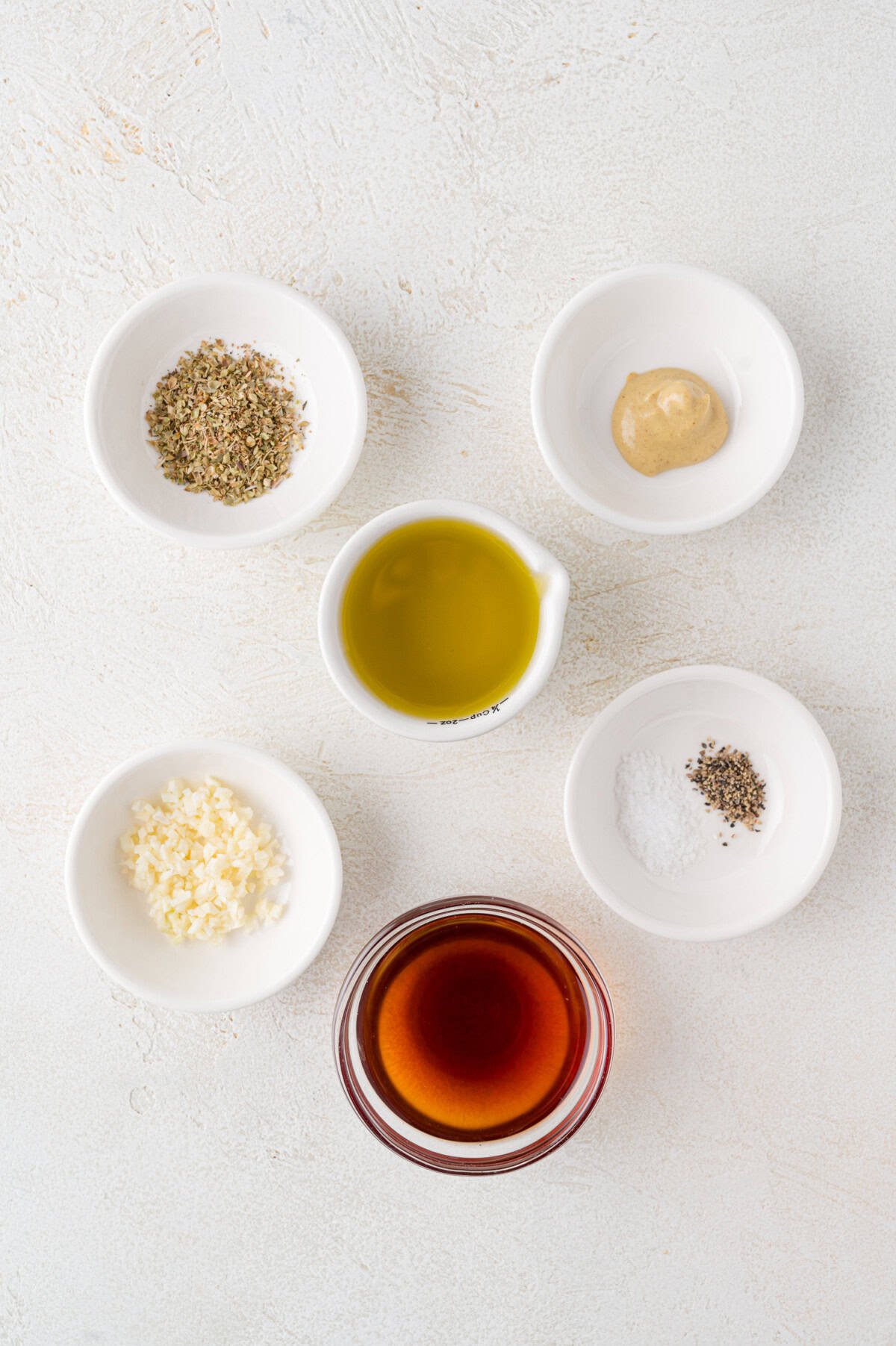
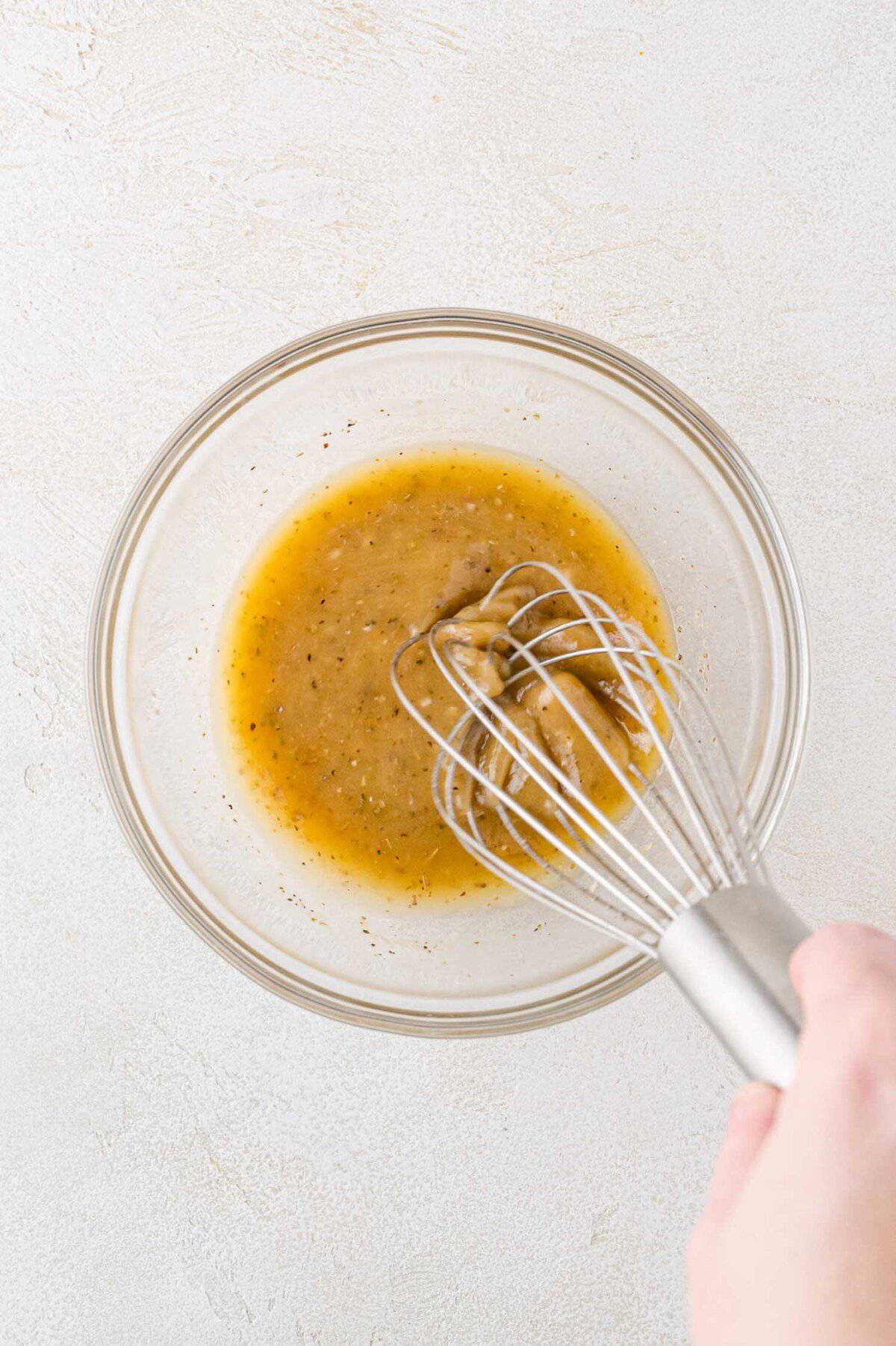
Prep the lettuce. After washing the romaine, dry it well. Chop it into bite-sized pieces and dry these in a salad spinner if they’re still a bit wet. Water is the enemy of salad! It makes the greens wilt and dulls the flavor of the dressing.
Prep the veggies. Rinse the tomatoes, peppers, and cucumber and pat them dry. Halve the tomatoes and chop the peppers and cucumber into bite-sized pieces. Thinly slice the onion.

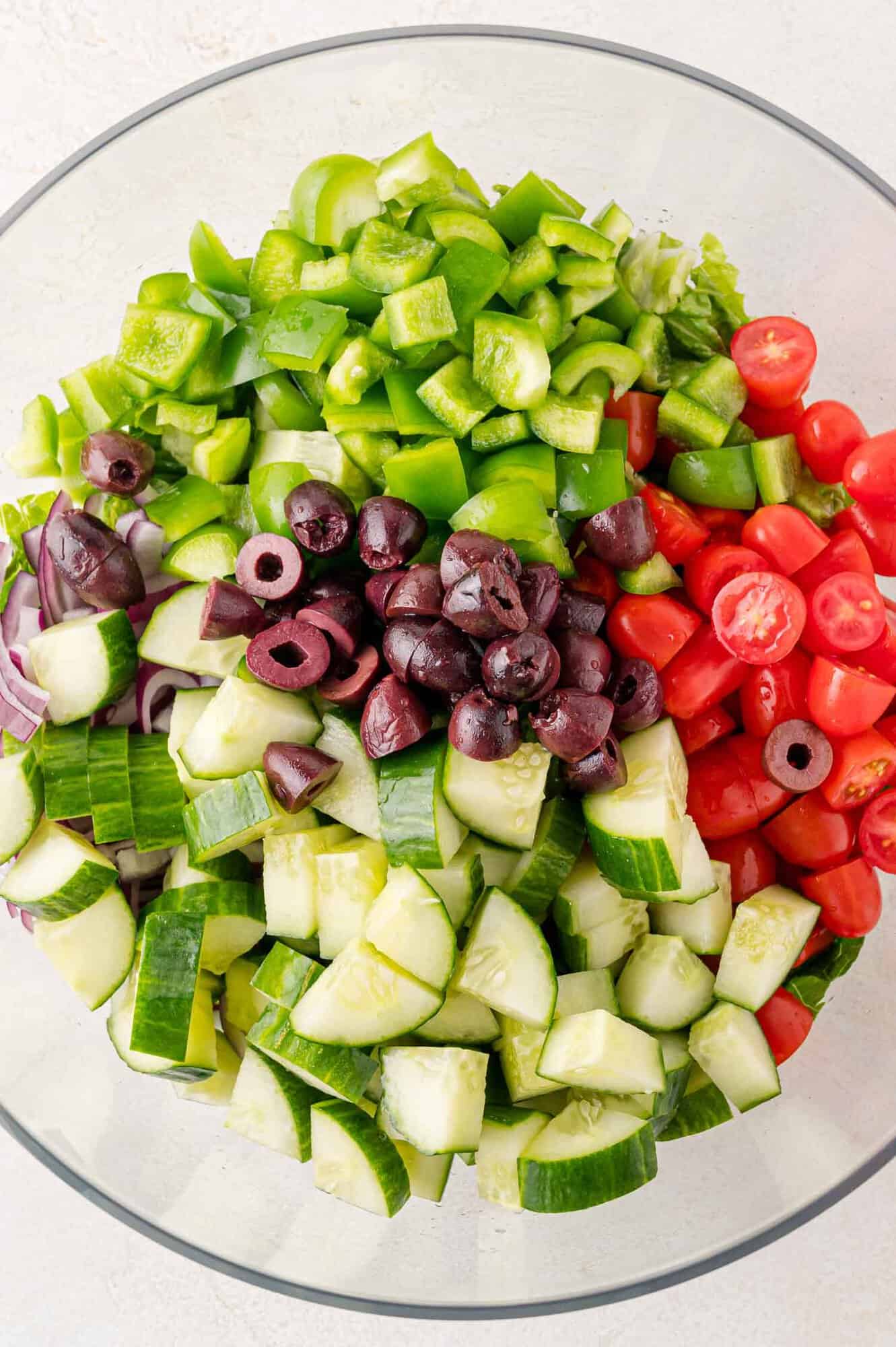
Toss. Combine the lettuce with the vegetables and olives. Toss gently, then add the cubed feta and toss again. Use a gentle touch especially after you add the feta. You don’t want to crush it into bits.
Dress the salad. Pour the dressing into the bowl and toss one more time, then serve.
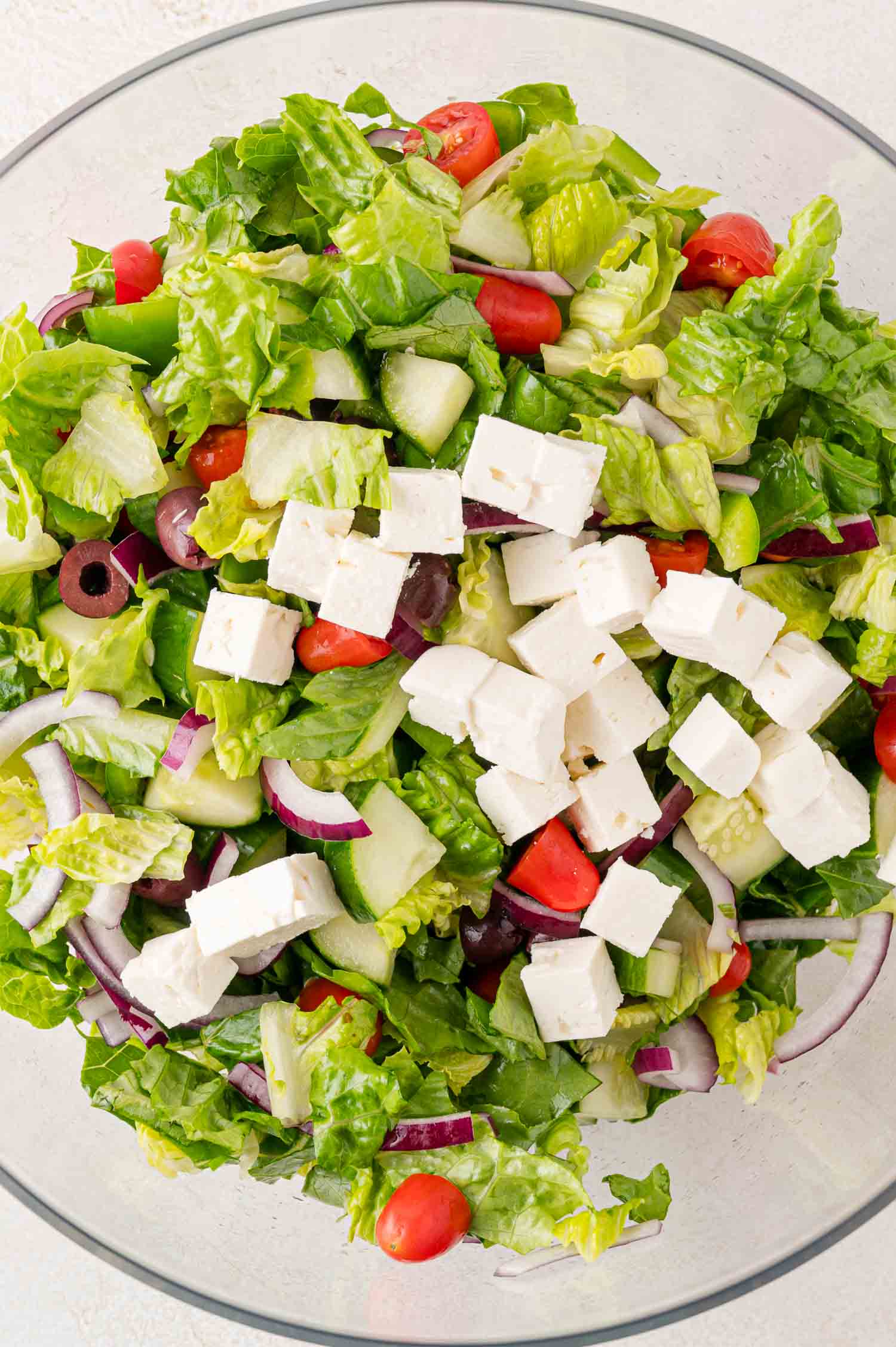
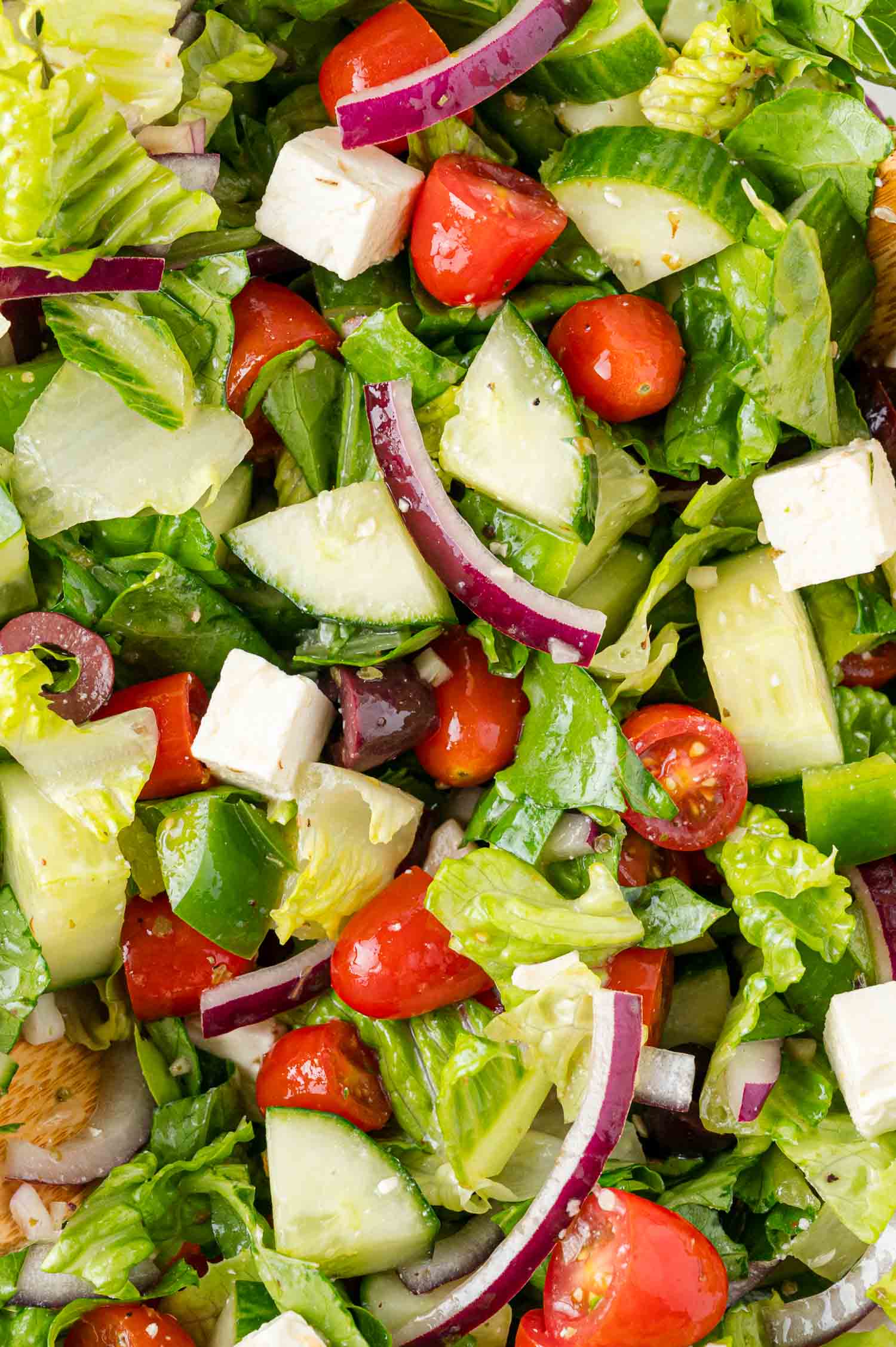
Tips and Variations
- Don’t dress the salad until you’re ready to serve it. If you’re making this for a party, you can serve the dressing on the side and let everyone add their own. If the salad sits in the dressing too long, the lettuce will wilt.
- Add crunch. There’s a lot of crisp in this salad but if you want some crunch too, pita chips would be fantastic. Add them as a topping rather than tossing them with the salad. For a healthier option, you can make your own crispy roasted chickpeas to add on top.
- Make it a meal. Add grilled chicken to this Greek salad to make it more filling and turn it into a complete meal. If you’re a fan of tuna, add a can of solid white tuna, drained. Add drained canned chickpeas for plant protein, or skip the lettuce and sub in cooked quinoa.
Serving Suggestions
Meat. Serve the salad as a side with marinated chicken. Use Greek chicken marinade to infuse it with flavor before grilling or baking. Greek meatballs would be perfect alongside this salad, too, with creamy tzatziki sauce.
Seafood. Lemon pepper shrimp or lemon salmon with dill both have flavors that would pair well with Greek salad.
Pita bread. Serve pita bread on the side to scoop up any leftover dressing and feta from your salad. We love this easy flatbread recipe! Serve it with homemade hummus or garlicky tahini sauce if you like.

If possible, store the Greek salad and dressing separately. This will extend the storage life of your salad. Stored separately, the dressing will last for a week and the salad will last for 2 to 3 days. Whisk the dressing before using it and, if it’s solidified in the fridge, let it come to room temperature for 10 to 15 minutes.
If you’ve already dressed the salad, it will keep in an airtight container for up to a day. You can add a few handfuls of freshly chopped romaine to revive some of the crispness.
In a small bowl or measuring cup, whisk together dressing ingredients until well-combined (emulsified).
¼ cup extra virgin olive oil, 3 tablespoons red wine vinegar, 1 garlic clove, minced or pressed, ½ teaspoon dried oregano, ½ teaspoon Dijon mustard, ¼ teaspoon kosher salt, ⅛ teaspoon coarse ground black pepper, more to taste
Rinse the romaine lettuce; dry as much as possible. Chop into bite-sized pieces. If the lettuce still seems wet, spin it in a salad spinner to remove any excess water.
1 head romaine lettuce
Add the lettuce, onion, tomatoes, cucumber, green bell pepper, and olives to a large salad bowl or mixing bowl. Toss gently to mix. Add the feta and toss again gently.
1 pint cherry or grape tomatoes, halved, 1 greenhouse cucumber, chopped, 1 green bell pepper, chopped, ½ cup Kalamata olives, pitted and halved, 4 oz. feta cheese, cut into cubes, ½ red onion, very thinly sliced
Add the dressing to the salad immediately before serving; toss until well-coated with dressing.
- Romaine: We use a whole head of romaine. If you use romaine lettuce hearts, you’ll need a package of 3 hearts, because they are smaller.
- Onions: To reduce the strong flavor of the onions, try this pro trick. Marinate the sliced onions in the dressing while you prep the rest of the salad. This will take the bite out of the flavor.
- Make ahead: If you don’t plan to serve this salad immediately, refrigerate the dressing and salad separately. Dress the salad immediately prior to serving.
Serving: 1cup, Calories: 148kcal, Carbohydrates: 9g, Protein: 4g, Fat: 12g, Saturated Fat: 3g, Polyunsaturated Fat: 1g, Monounsaturated Fat: 7g, Cholesterol: 13mg, Sodium: 381mg, Potassium: 453mg, Fiber: 3g, Sugar: 4g, Vitamin A: 7519IU, Vitamin C: 29mg, Calcium: 119mg, Iron: 1mg
Nutrition information is automatically calculated, so should only be used as an approximation.

